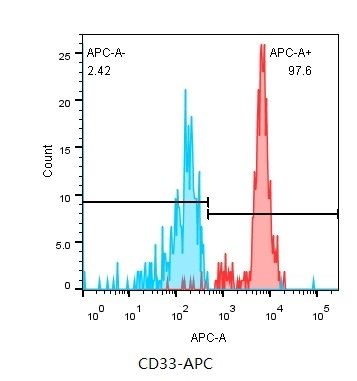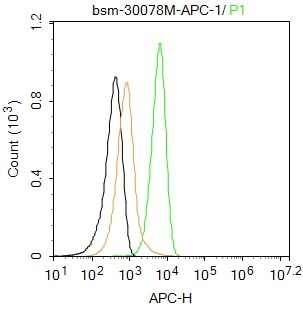Blank control:U-937.
Primary Antibody (green line): Rabbit Anti-CD33 antibody (SLM30078M-APC)
Dilution: 1ug/Test;
Protocol
The cells were incubated in 5%BSA to block non-specific protein-protein interactions for 30 min at room temperature .Cells stained with Primary Antibody for 30 min at room temperature.Acquisition of 20,000 events was performed.

